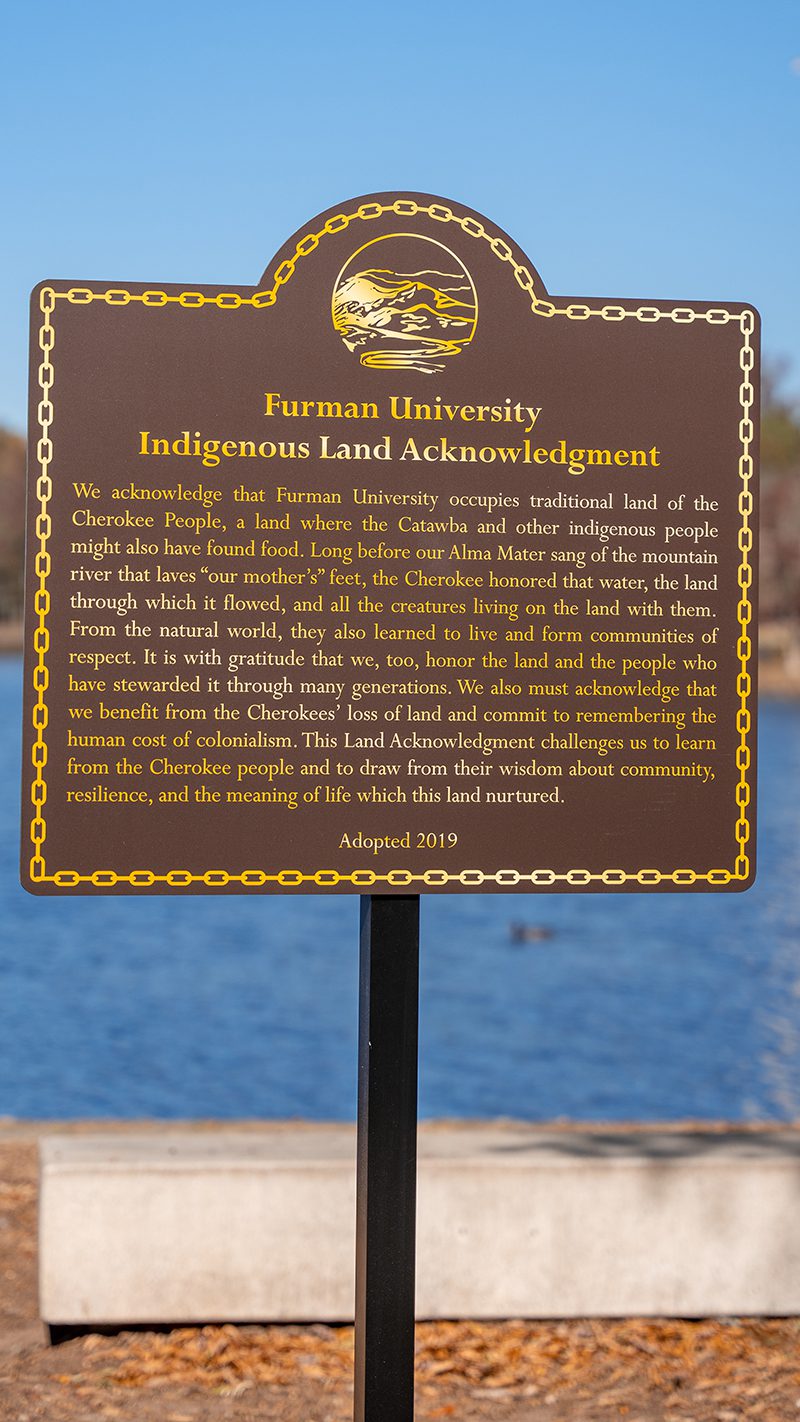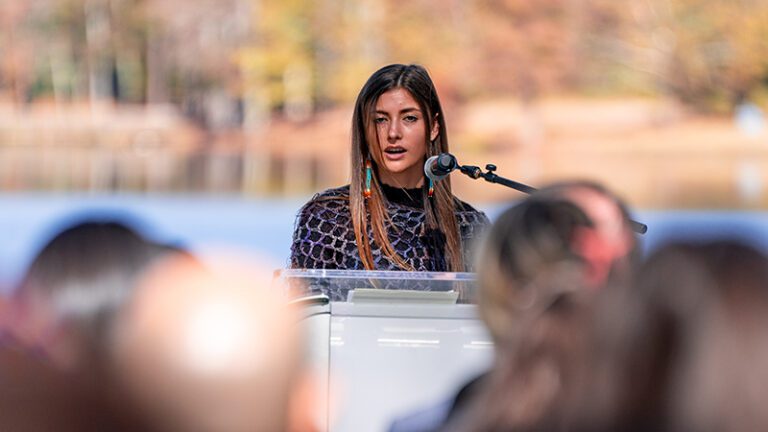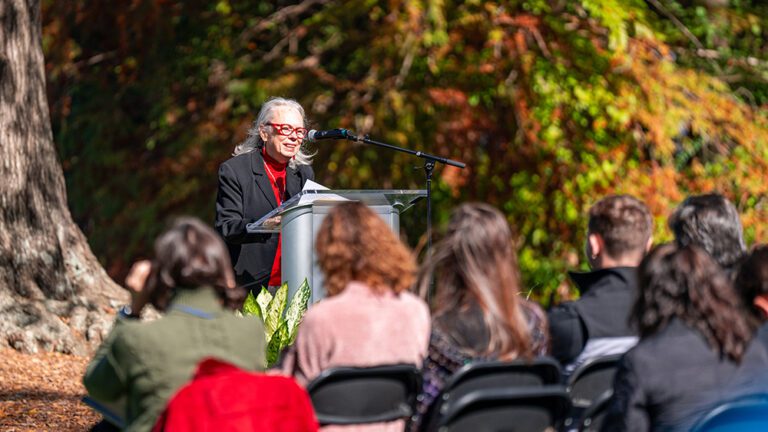Furman unveils plaque acknowledging Cherokee land

A crowd of about 100 gathered along the edge of Furman Lake today to witness the unveiling of a plaque acknowledging the land where Furman University stands once belonged to the Cherokee people.
With mid-day sun shimmering off the water in the background and a murder of crows noisily chattering in oak trees high above, Furman students who are members of Native American tribes shared how much the acknowledgment meant to them.

Ahna DeCosty ’25 speaks at the unveiling of the Cherokee Land Acknowledgment plaque.
Shelby Parker ’15, a member of the Eastern Band of Cherokee who played softball for the Paladins, commented on how far society has come, and especially Furman, in identifying and embracing Native Americans as she recounted racist slights she endured that were acceptable just a few years ago.
“While the land acknowledgment is noble, the work is just beginning,” Parker said. She challenged the university to continue building relationships with the Cherokee by asking hard questions, being patient and continuing to grow “to make Furman the best it can be and make Furman a welcome home to all individuals.”
Chloe Sanderson ’24, a member of the Lumbee Tribe of North Carolina, Ahna DeCosty ’25, a member of the Caddo Tribe of Oklahoma, and Bryce Sain ’26, a member of the Eastern Band of Cherokee, also spoke, as did Margaret Oakes, professor of English and a member of the Choctaw Nation of Oklahoma.
Danielle Vinson, professor of politics and international affairs, explained that the plaque, created by Anne Heaton Sanders ’22 M’24, incorporates visual elements significant to the Cherokee. A chain link pattern commonly found in Cherokee baskets, borders the plaque as a reminder that all things are interconnected. The plaque also depicts a river flowing out of an incomplete circle, a reminder that the river continues to flow, “just as the Cherokee people are here today, a testament to their resilience and wisdom,” Vinson said.
When the Cherokee were forced to move westward, they left “more than property,” Furman University President Elizabeth Davis said. “It was a landscape that revealed to them truths that made life meaningful. It was their utopia. It was land where their Cherokee ancestors rested, a place of meaningful relationships.”
Setting the plaque is part of Furman’s commitment to “form relations with the Cherokee people and to learn from the past,” Davis said. In 2019, Furman first made its land acknowledgement public, with a presentation on campus. In 2022, the university presented a framed acknowledgement to the Cherokee Tribal Council.

Helen Lee Turner, the Reuben B. Pitts Professor of Religion, speaks at the Land Acknowledgment plaque unveiling.
Helen Lee Turner, the Reuben B. Pitts Professor of Religion, who co-chaired the Land Acknowledgment plaque committee with Vinson, said that while some land acknowledgments across the country have drawn criticism, Furman’s land acknowledgment has already been a meaningful and positive act. It helped spark the creation of the Native American Indigenous Student Association. The university will add a course on the Cherokee to the curriculum next year, and there’s potential, and hope, for the creation of a minor in Native American studies in the future.
But, Turner said, land acknowledgments also “recognize the unique and enduring relationships that exist between indigenous people and their traditional territories and commemorate the fact that they have not and cannot be erased. The Eastern Band of the Cherokee people are here. They are making a mark and demonstrate to all of us the power of resilience,” Turner said.
Cherokee storyteller Kathi Littlejohn also spoke at the unveiling, telling a legend of a man swallowed by a fish who became bald after being in the beast’s belly. After the speeches and the plaque’s unveiling, she delighted in the presence of abundant animals gathered nearby. Squirrels chased each other around the trunk of a nearby tree, Furman’s black swans paddled along the bank, a skein of ducks took flight and the crows continued to squawk and caw overhead.
“I think the crows are saying, ‘This is a great event. Everybody come and look and see what they’re doing,’” Littlejohn said. “When the animals join in, it’s a good event.”